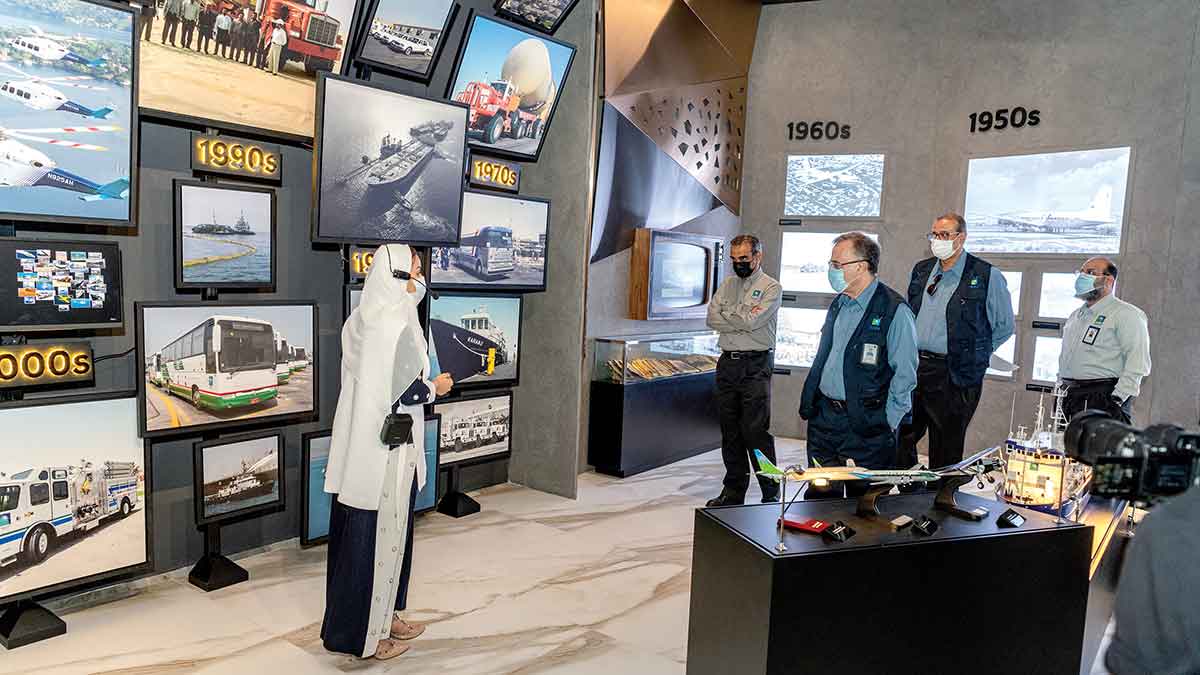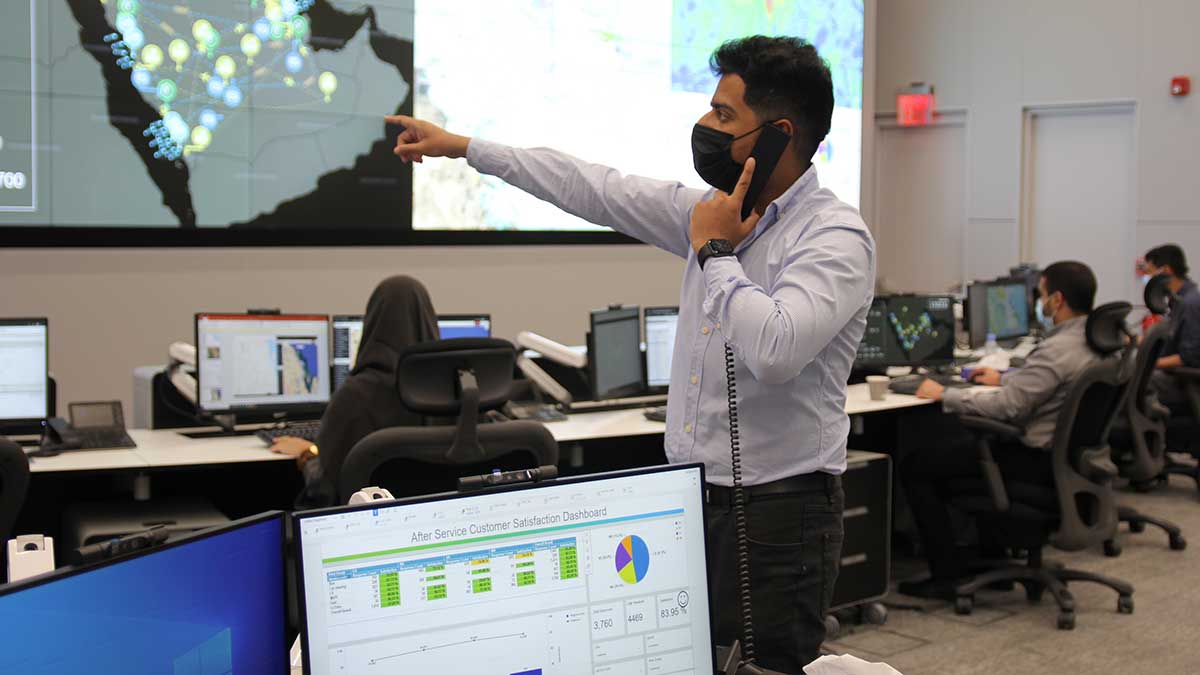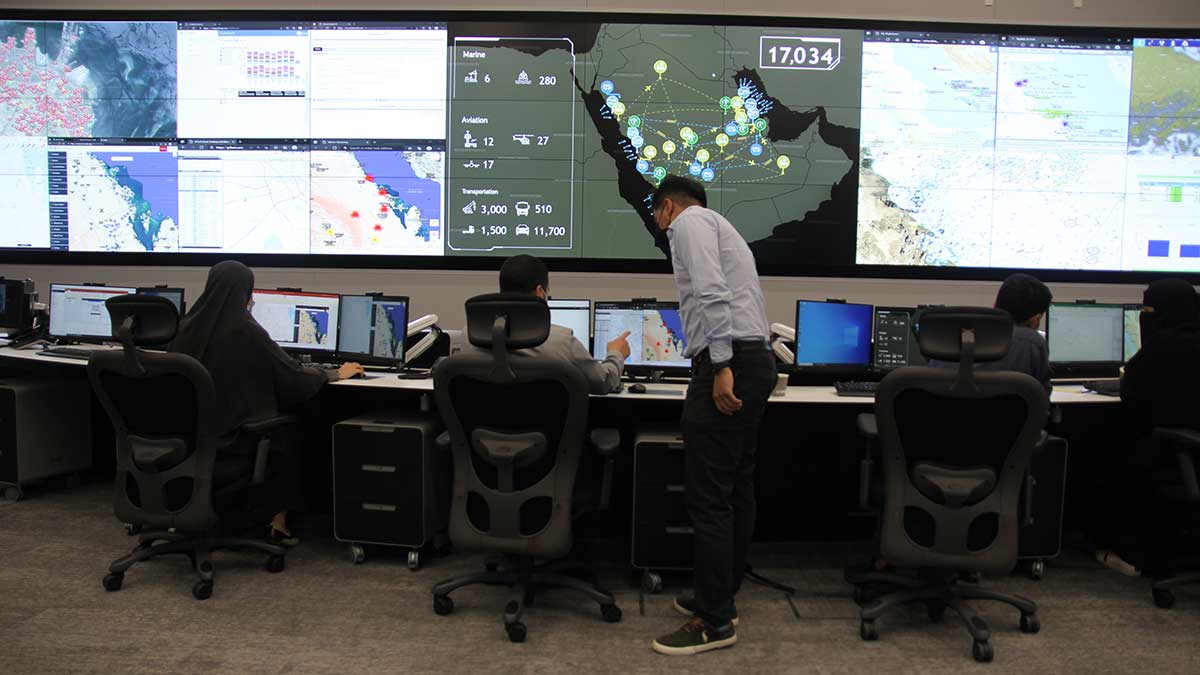Going Mobile
Aramco Mobility Center, a digital hub to keep Aramco moving

Global June 09, 2021 - By
“Digital hub gives us the agility to transform the way we manage and control our readiness and response to emergency events.”
From the company’s earliest days, Aramco has built its success on its mobility, the ability to get its people and equipment to where they were needed, when they were needed. Starting with a pair of borrowed cars in 1933, and later a Fairchild 7 aircraft in 1934, Aramcons traveled the length and breadth of the Kingdom to find the resources that would transform Saudi Arabia into an energy giant.
Today, with dozens of aircraft, more than 10,000 vehicles, hundreds of buses, and hundreds of ships, Aramco has inaugurated an intelligent center that integrates all mobility services under one roof. Based on three main aspects of business — emergency response, operational excellence, and customer care — the new Aramco Mobility Center in Dhahran is designed with the latest digital platforms to maximize efficiency and to optimize the use of transportation assets.
“This digital hub gives us the agility to transform the way we manage and control our readiness and response to emergency events,” said Fahad M. Al Abdul Kareem, executive director for Industrial Services. “By joining all mobility services under one roof — ships, aircraft, buses and trucks — and integrating the latest technologies from the Fourth Industrial Revolution, we can identify what resources we have and direct them to the places where they are needed, and monitor them in real time.”
Given the scale of Aramco’s transportation network and the geographical range to be covered, the new mobility center could not have come at a better time. Here is a look at the company’s transportation assets, managed by three different departments: Aviation, Marine, and Transportation and Equipment Services.
Marine
• Manages flights through two public seaports and six Aramco-owned ports, including Tanajib Marine, the largest port for an offshore support facility worldwide, supporting 300,000 vessel movements and annually transferring 1 million tons of cargo.
• Operates a fleet of more than 280 vessels to support offshore and industrial security operations.
Aviation
• Operates scheduled flights through 18 Aramco-owned airports along with eight government airports in addition to 500 helipads, utilizing a fleet of 17 airplanes and 27 helicopters, which makes the aviation services in Aramco one of the largest private operators outside the United States.
• Tanajib airport is the busiest in the Middle East in terms of takeoffs and landings, with an average of 40 to 60 helicopter landings and takeoffs each day.
• The aviation services transports approximately 1 million passengers annually to support the company’s various operations.
Transportation and Equipment Services
• Performs more than 60,000 critical lifts, through six crane hubs located around major hydrocarbon facilities, supported with a total fleet of 200 cranes.
• Annually transports a total of 7 million tons of material and equipment to drilling operations, with a fleet of 1,500 specialized cargo trucks, with a total of 170 million kilometers driven per year.
• Manages 500 buses, transporting 9 million passengers annually, in addition to a fleet of more than 11,000 private company vehicles.
Digital technologies give the company an opportunity to manage and control all these assets more efficiently, giving the decision makers real-time information across various operations at the right time.
Through artificial intelligence and the Internet of Things, we can place cameras, location devices, and other sensors that provide real-time monitoring and remote access to marine vessels, aircraft, and in-land transportation vehicles and equipment.
Greater efficiency in our mobility services means greater efficiency in controlling costs, which helps us remain competitive in a fast-changing energy-driven economy. To date, the optimizing of our transportation fleets has already brought dramatic cost avoidances, including:
• After the introduction of the Automatic Vehicle Location system in 2014, tracking and monitoring Aramco vehicle movements, we were able to introduce a digital car sharing platform that replaced the U-drive service, realizing 18% fleet optimization.
• Automated dispatching, and consolidation of shipments, has allowed truck drivers to receive new shipment waybills on hand-held devices, optimizing the truck fleet by 23%.
• Centralization of the administration of our bus service enabled Aramco to lower bus capacity by 50% in accordance to COVID-19 health guidelines, without affecting the quality of service.
As demand for energy increases, the Aramco Mobility Center is well placed to provide real-time information on transportation assets that help the company provide the energy to the world. The center will be open to visitors soon.






